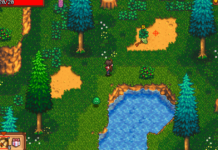“Role-playing games are only 50 years old. We’re still inventing them every day. That’s what’s really exciting about it. We haven’t found the boundaries of it yet, if there are any. We’re still pushing out. That’s what keeps me doing this stuff, years after most of my peers have retired or passed on.”
Do you believe in fate, that there’s an invisible force steering us through our lives and that we end up in certain places for certain reasons? Perhaps after hearing Lawrence Schick’s story, you will.
It’s not a name I expect you’ll recognise, but you’ll know some of the things he’s responsible for. Take the term XP, for example. It’s ubiquitous in gaming and possibly beyond it, and Lawrence Schick created it. It’s primarily the reason I set out to track him down, to hear how that came to be, because it fascinates me to think of a gaming landscape where there’s no established term for experience points, and possibly no such thing as experience points at all. I find it really hard to even conceive of that, given where we are now.
But it’s not all I learn from Lawrence Schick when I do track him down. I discover a passion within him that has helped shape role-playing games in the past, and a passion that continues to shape role-playing games into the future.
To understand how the term XP came to be, we need to go back to 1979 when Lawrence Schick was writing a module for Dungeons & Dragons called White Plume Mountain. Even now, it’s considered one of the greats. Wizards of the Coast apparently thought it so important it updated it for the fifth edition of the game, for the Tales from the Yawning Portal compendium, released in 2017. It’s a dungeon run campaign set in the White Plume Mountain, but what makes it special is its use of creative puzzle challenges rather than brute-force combat. That and a trio of sentient weapons you need to find and free.
45 years ago when Lawrence Schick wrote it, he had no idea of its future significance. All he intended White Plume Mountain to do was get him a job at TSR, the company making D&D. It was a game he’d been besotted with ever since his college friends brought back photocopies of the original white box edition in the mid 70s. Now, he wanted to work on it. White Plume Mountain was his audition piece and, to his delight, it worked. Schick found himself the very first person hired in a design role by TSR to work on the now legendary role-playing game, directly alongside the game’s co-creator, Gary Gygax.
“And it was while I was editing his manuscript for the first Dungeon Master’s Guide that I realised that we needed an abbreviation for experience points,” Schick tells me now, in a Zoom call from an appropriately book-bedecked room of his house. “We couldn’t use EP because Gary [Gygax] had added electrum pieces to the currency, which nobody ever used – everybody just used GP and SP and CP for gold, silver, and copper. But he [Gary Gygax] was insistent that EP was for electrum pieces. And so I had the problem of trying to figure out an abbreviation for experience points, so I came up with XP and used that, and it stuck. And it got picked up by other tabletop publishers for use in other tabletop role-playing games and then, since the idea of experience points and character progression became a standard thing in role-playing and all kinds of other games, both paper and video games, there needed to be an abbreviation for XP and it just became the global standard.”
It’s a wonderfully mundane story. “Oh it was just like 20 minutes on a Thursday afternoon.” But therein lies the charm. It’s precisely the ordinariness of the discovery that speaks to the extraordinariness of what people like Schick were doing at the time. They didn’t have to make great discoveries in order to stand out and create a legacy because everything they did had that effect.
It’s as Schick says: “We were inventing a whole art form at the time. Everything we did was new, and so it was routine to come up with stuff that nobody had ever done before. And a lot of it was temporarily useful and is now lost to history and didn’t turn out to be important, but we were also making up stuff that did stick and that did go on to become part of the creative lexicon, and not just of games.” Levelling-up was another term that stuck. Even the base concept of character progression was something that didn’t really exist before D&D. So many of these fundamental RPG things – of these fundamental gaming things – were, as Shick says, “rooted in a few years in the ’70s when they were all worked out for the first time”.
What they were creating was a fundamentally new way for people to play together. Shrinking wargames down to adventures about individuals, and bringing players’ imaginations into it? It opened everything up. Suddenly, players were in control of what was going on. That was incredibly exciting to people like Schick. “I was one of the people who was immediately taken with the potential of this art form,” he says, “and I’ve been working in the background and sometimes in the foreground on RPGs and RPG-adjacent things since then, always trying to find ways to realise that potential and reach people with the ability to tell stories to themselves and their friends, instead of just having stories told to them.” But it would be another 40 or so years before he’d really see that potential reached.
Lawrence Schick has had a long career, and not all of it has been spent in games. A great love of his has and continues to be swashbuckling fiction, the kind you find in books like Alexandre Dumas’ Three Musketeers – a book he learnt French in order to read in its original form. He then went on to produce his own translation of it as well as translate and reconstruct Dumas’ unfinished sequel, the 1867 novel Le Comte de Moret, as The Red Sphinx. He’s written his own two-part parallel novel to The Three Musketeers, called The Rose Knight’s Crucifixion, and there’s an entire Musketeers Cycle being published in serialised form on Substack that I don’t quite understand. In short: he seems to be intimately involved with everything to do with Dumas’ swashbuckling series, and swashbuckling more broadly around it.

That passion combined with a love of role-playing games led him to live action RPGs, or LARPs, which are something I got a taste of when I went to Witcher School in Poland some years back. Schick would write and produce LARPs for dozens of people. It’s why you see so many pictures of him dressed like a Musketeer on the internet, rapier slung casually over a shoulder, long white hair swept back, moustache and beard as pointed as the blade he carries. Sadly, though, he’s trimmed that away, preferring a cropped cut and neat goatee. “Yeah, it was just time for a change,” he says.
Games are the constant running through his career but surprisingly, given his passion for D&D, he didn’t spend long at TSR. He left in 1981 and moved over to making computer games instead, working for Coleco on games like Zaxxon in the early 80s, and MicroProse on games like Airborne Ranger, Sword of the Samurai, and Task Force: 1942. By the 90s, he’d earned such a reputation that early-internet giant AOL (America Online) hired him to run its entire games channel.
Schick went freelance for some years shortly before the turn of the Millennium but returned to gaming as an early-designer on the fondly remembered Kingdoms of Amalur: Reckoning, released in 2011. A few years later, he took up possibly his most significant role in video games yet, on Elder Scrolls Online, as loremaster. “Somebody had to be entrusted with making sure that the lore of Tamriel and The Elder Scrolls was promulgated appropriately,” he tells me, and note his careful deployment of the word “promulgated” there – he’s a person who considers the words he uses. His job there was a daunting one: to bring together, and oversee, all of the separate strands of Elder Scrolls lore. ESO, remember, covers all of the Tamriel content, whereas the single-player Elder Scrolls games – like Skyrim and Morrowind – tend to be based in one specific region. Schick, then, was the person you’d ask to see how a storyline fit in, and he often wrote a lot of them too.
But as his tenure there approached 10 years, he was also faced with an irresistible urge to move on. “I had become way too comfortable as loremaster at Elder Scrolls Online,” he tells me. And it’s here, I like to think, fate starts to play its hand. The urge prompted Schick not just to change jobs but to change continents, and swap North America for Europe, and specifically, Ireland. He made the move to work for an independent game developer on a mobile game – a steampunk world-spanning game, he calls it – and he sounds like he was excited about it. But it was struggling as a project and when management pivoted towards the strategy genre with it, there was no apparent need for a heavy-duty narrative designer like him. “So I went looking for another gig.”
I don’t know what you know about the Irish game development scene, but there aren’t as many opportunities there for the work he does as in the US. Nevertheless, because of low corporation tax, there are a surprising number of gaming companies with offices operating there, and one of these happened to have its main storytelling office in Dublin and be making a very interesting-sounding role-playing game. Coincidence? Perhaps. Schick applied there like anyone else might and soon found himself in an interview with the studio’s founder and creative leader, Swen Vincke. It was, of course, Larian he was applying to, and the game project was Baldur’s Gate 3. Somehow, Schick had found his way back to D&D.
“We hit it off right away,” Schick says, which doesn’t surprise me. From what I know of Vincke, he grew up playing D&D, and it’s the player-led hijinks of those tabletop experiences he’s tried to capture in most, if not all, of Larian’s games. He and Schick have very similar outlooks. Nevertheless, it was a tentative start to the relationship; Schick took on some contract work for Larian before deciding, “oh this is the real stuff,” and to join full-time in March 2021. He was the principal narrative designer on Baldur’s Gate 3.

However, it’s worth remembering that a large chunk of the game was shaped by then; it had been out in early access for several months. Schick, then, would help build what wasn’t yet built, such as Acts Two and Three – Three in particular. He’d scope out Lower City and Wyrm’s Crossing before flipping to region lead to help populate and bring them to life. He named things, sorted terminology, and fielded not an inconsiderable amount of questions about D&D. It might have been a while since he had worked there – decades, even – but he’d played every iteration of the game, and maintained friendships with the people who’d led design on them.
What I imagine no one expected back when Schick was working on D&D, or even when he found his way back to it, many years later, was how much its popularity would have grown. Today, I’d consider it part of the mainstream – a place it has been propelled to by TV phenomenon Stranger Things, and actual-play super groups like Critical Role and Dimension 20. Even 10 years ago, when the fourth edition of the game launched, a rise like this seemed inconceivable; my partner bought a gorgeous D&D Lore & Legends book recently that charts the rise of fifth edition, which begins with a chapter about the end of fourth edition and how things looked then. It’s unfair to say Wizards was in crisis talks but it wasn’t far off. In 10 years, so much has changed.
Of course, Baldur’s Gate 3 has played a significant role in all this. It exceeded expectations and dominated the gaming conversation for months, sweeping the awards circuit and putting Larian and D&D in the middle of the gaming world in dazzling light. “It has surprised all of us,” Schick tells me. “It struck a chord. It’s hit a nerve that we always understood, but now it’s become clear that if it’s presented in an accessible way, and in a way that really engages people in their own stories with the powerful stories of characters, that it’s a thing there’s been an unsuspected market for.
“The thing about role-playing games that really makes them powerful – and this is something that has not necessarily been at the forefront of their implementation, even from the beginning – is the roles,” he says. It’s that crucial part of the term we’ve labelled the genre with. “They’re stories about people, and they’re stories in which you can be the protagonist along with your pals, rather than looking over the protagonist’s shoulder in serial media.
“Now, it took a long time to really start to realise the potential of that, but the core of it is that people want to be in stories, they want to tell themselves stories, they want to make the stories happen. But very few people are professional storytellers: they don’t have the tools to do that. Dungeons & Dragons, RPGs, Baldur’s Gate 3: we give you the tools to do that.”
For Schick and Larian, letting you do what you want to do in the game is paramount – it’s their axiom, he says, carefully selecting another word. “We’re not having them ride along on our story,” he adds. “We are, to the extent that we can, giving them the ability to tell the stories. And stories are about people, and so giving them really engaging and nuanced characters who have their own story arc that you can play along with, and a story that you can influence – not something that you just have to blindly follow – that you can involve yourself with, these very engaging and frankly, to the extent that we can make them, lovable characters: that’s what I think has surprisingly elevated BG3’s impact into the popular culture.”
This year, 2024, could be the biggest ever for D&D – the world’s most famous role-playing game, as Wizards of the Coast likes to call it – as it turns 50 years old and launches a revised edition of its ruleset. It’s known officially as One D&D but colloquially as 5.5e, owing to it being an incremental update rather than step-change, but it’ll mean a whole new Player’s Handbook, Dungeon Master’s Guide, and Monster Manual.
I’m very excited about it, but Larian is leaving D&D behind. Despite the phenomenal success of Baldur’s Gate 3, the next game Larian is making will not be BG4 or have anything to do with D&D, we’ve been told. Actually, the studio has two games in development, and from what we’ve heard, they’ll both be quite different to what we’ve seen before, though I expect within the same overarching systemic role-playing game borders.
Lawrence Schick’s tenure at Larian doesn’t depend on D&D, though, thankfully. Even when I speak to him in November 2023, for this piece (it got buried under a few things, I’m sorry), he’s apparently already “neck deep” working on a new game, though he obviously can’t say what it is. He can, however, talk quite excitingly about Larian’s ambitions for the future of its role-playing games, and the advancements it would like to make.
“One of the things that we are really good at Larian,” he says, “is lots of layers of reactivity to the choices that the player makes, and that’s all handcrafted – that’s applied layer after layer after layer like an ancient Japanese lacquer artist applying the 89th layer of lacquer. You go over and over every possibility and try to make sure that you have as many of them as you can. And even if it’s small, the fact that the game recognises what you’ve done is always a delight. The challenge going forward is to expand upon that.
“There have to be ways whereby you can learn from the choices the player makes and use that as the basis to generate a reaction based upon that. Then you’ll be able to even more deeply and broadly have a game that is responsive to the choices that you make. That’s the goal. Can we do that through being smarter? Can we do that through aspects of machine learning? Can we do that through involving the player even further in their self-definition? Where do you go with that? That’s where we at least are thinking.
“Because as we see it,” he adds, “the game is a thing that you give to the player to complete – to make real. Everything that we make is only a potential experience, so the real experience doesn’t exist until the player involves themselves with all this stuff and makes it, moment to moment, happen. It’s ephemeral, right? It only happens in the now. It’s like life! So the closer that we can get to an experience that feels like life, that’s where we want to go.”
It’s an interesting thought to leave him on. I still find it remarkable that decades apart, he managed not only to find his way back to D&D, but to a way he could shape the future of role-playing games again. Luck? Coincidence? Fate? I don’t think it matters. What matters is that he’s where, I believe, he was always destined to be.
www.eurogamer.net







